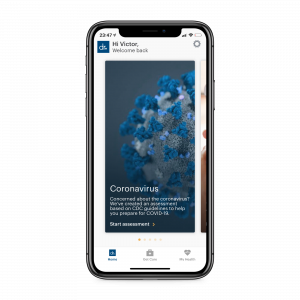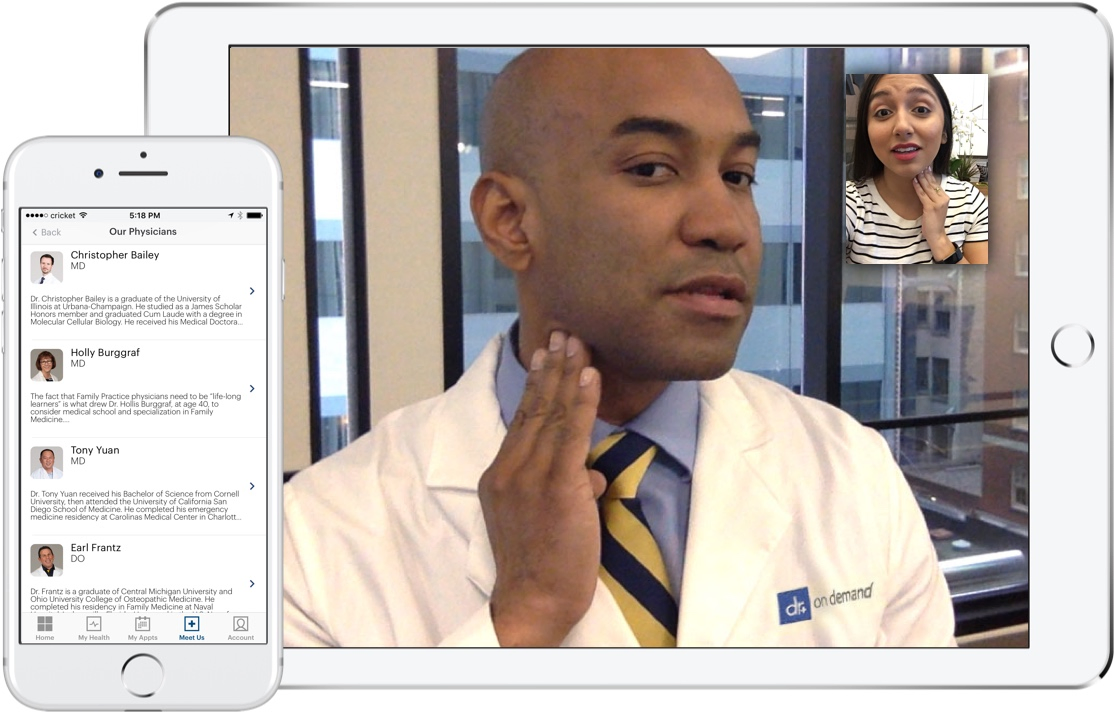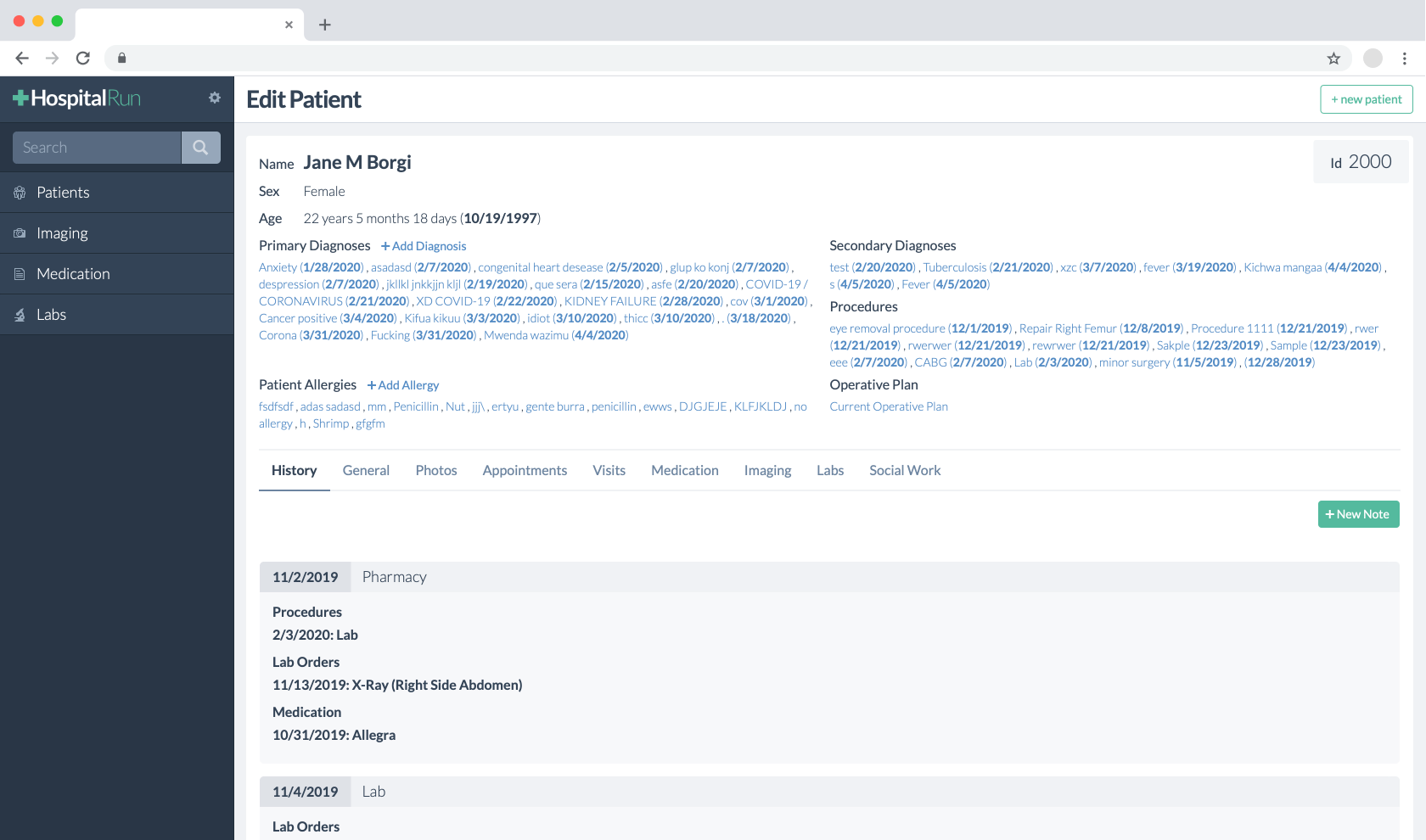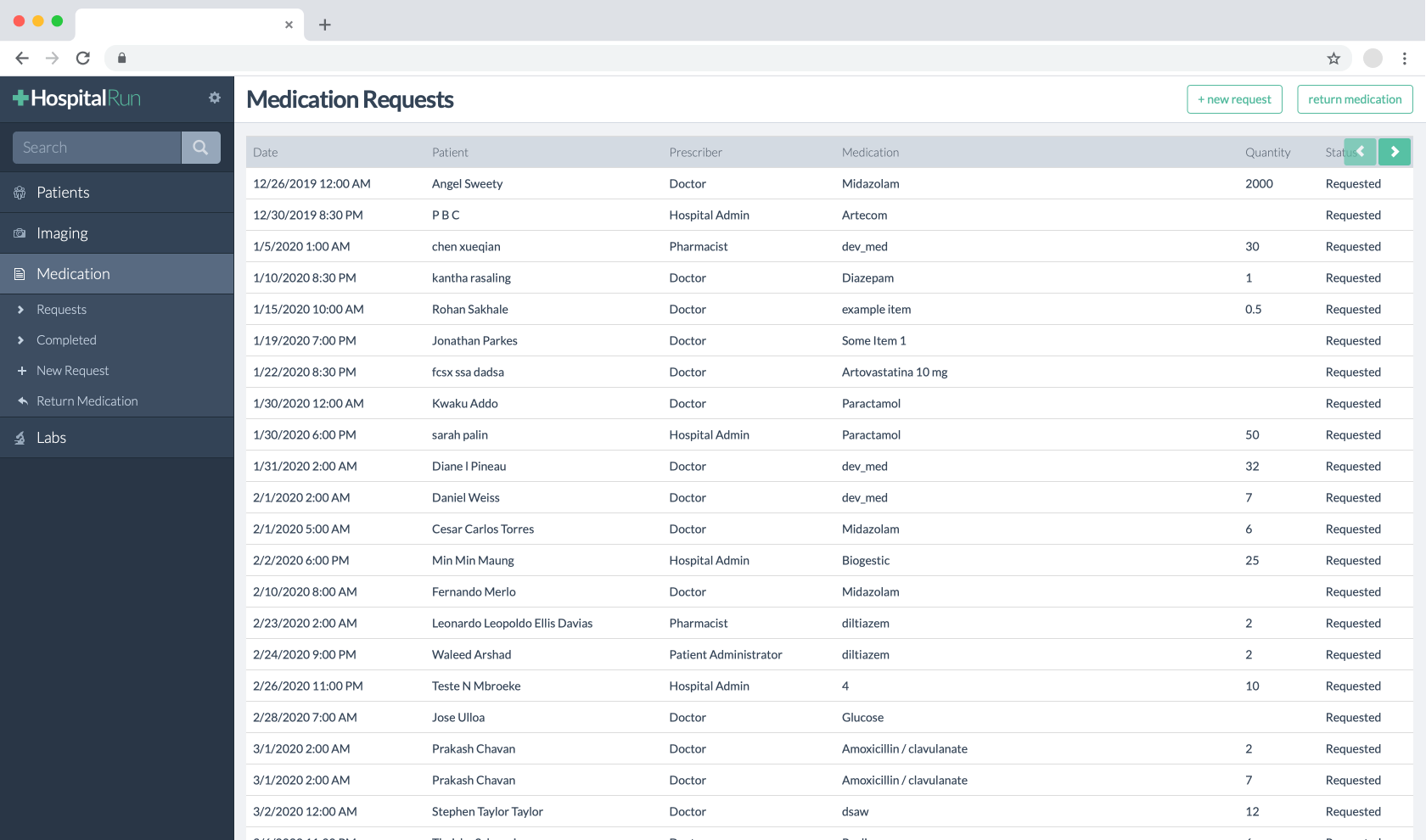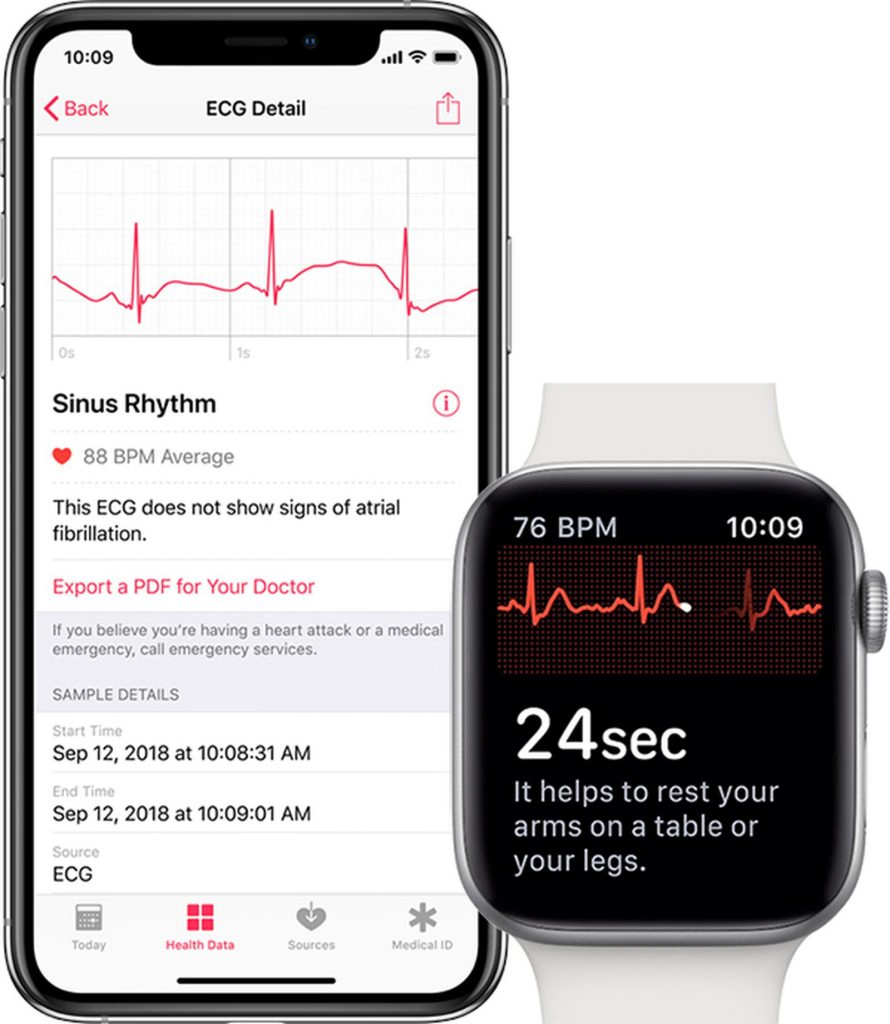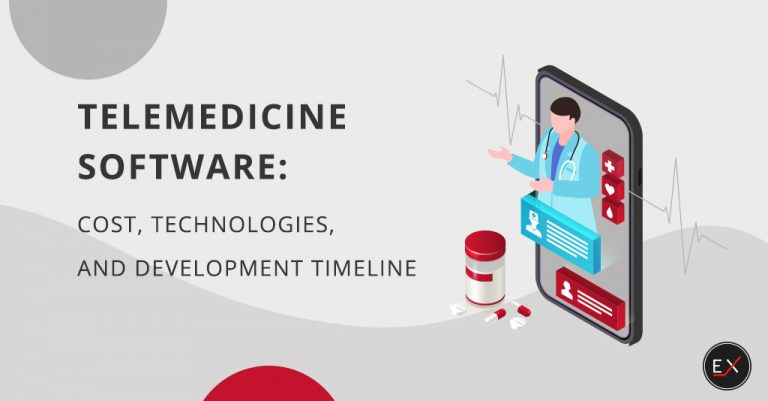
Updated: April 17, 2024
Published: April 24, 2020
Carrying on the latest topic in our blog, we’d like to proceed to the technical and financial aspects of telemedicine software development. As we’ve already touched the subject on software functionality and compliance regulations, it is high time we found answers on the following questions:
– What technology stack is used?
– How long does it take to develop telemedicine software platforms?
– How much does telemedicine software cost?
We’ll give responses to these and many more questions in this article.
List of contents
- Development technologies and platforms
- Telemedicine software cost and development timeline
- Telemedicine software cost for patients’ app
- Telemedicine software cost for doctors’ app
- In conclusion
DEVELOPMENT TECHNOLOGIES AND PLATFORMS
Once you define the user needs and learn safety regulations, it is time to choose the up-to-date technologies to implement your ideas. Telemedicine software development is a complex project that requires time, effort and resources. The choice is usually based on both business analysis and technological aspects. Besides developing two separate applications that are connected by the unified back-end service, the developers will deal with various types of integrations. It is a common practice to integrate the software with hospital management systems, medical devices, and other care-related services like insurance and pharmacies.

Web application for telemedicine
One of the main tasks of web developers is choosing the right cloud architecture that maintains interactions within the app. It’s possible with applying up-to-date server-side technologies (Node.js,.NET, PHP, Java) and JS front-end frameworks (React, Vue.js, Angular). Every web development approach has its own pros and cons nevertheless the main thing remains to correspond with the initial user needs and requirements of the telemedicine software systems.
Mobile application for telemedicine
Healthcare providers are interested in dynamic solutions to have the possibility to connect with their users. As they focus on iOS and Android mobile app development, they need to choose between native and hybrid approaches. Objective-C, Swift (iOS development) and Java, Kotlin (Android development) are popular in creating native mobile apps whereas React Native, Xamarin, Ionic are suitable technologies for hybrid app development.
Database implementation
Only with efficient database implementation, the telemedicine software development will result in excellent user experience and great application performance. Since the databases are used for the electronic health records keeping, it has to be structured-data oriented and very secure. Programmers have to ensure such database properties as completeness, flexibility, integrity, efficiency, and usability. Because of that, eHealth solutions use structured SQL databases.
Integrations
Integration is an essential step in the overall development process. Working on complex solutions, developers have to deliver continuous integration for bringing together all the necessary components. For example, the telemedicine software database has to be definitely connected with EHR, EMR, and HMS. In order to gather data on patients’ conditions, they integrate the number of medical devices as well as synchronize with other health applications.
Despite the fact that telemedicine software development is a complex process, everything is achievable with the right chosen technology stack and professional team. With the assistance of great business analysts, experienced developers, designers and QAs, you are able to receive the quality competitive market products.
TELEMEDICINE SOFTWARE COST AND DEVELOPMENT TIMELINE
Naturally, telemedicine software cost depends on technology choice. An experienced custom software development company will be able to collect your requirements and suggest the best set of tools to achieve business goals. The overall cost consists of the expenses on the codding and maintenance. In the long run, support and new functionality should be definitely considered while you’re working on the budgeting.
Before we start, it is worth mentioning that the calculations are done using the average rates for software development in offshore locations like Ukraine or Belarus – $40 for the engineer’s work hour. The cost of similar telemedicine platforms development in the US or the UK can be up to three or more times higher. You can learn more about the cost of software development in various regions from our report that aggregates the hourly rates that you can expect in 2020.
The easiest way to evaluate the telemedicine software cost is to break down the essential features that it has and estimate how much time and money it would take to build the application module by module.
Let’s do that on the example of apps like Doctor on Demand, OnDemanVisit or Zoom+ Care.
TELEMEDICINE SOFTWARE COST: PATIENT’S APP
Patient Profile
This is the home screen that patients see when they launch the application. During the first launch, you usually need to go through the step by step profile creation process to enter information such as the name, age, sex, chronic conditions, etc. There is more than one way to systematize this page. As an experienced eHealth software development company we can suggest organizing it as a hub where the patient can see very brief information about his profile with the accent on the information that is organized and highlighted depending on the context, time, date, and medical information. This can be smart widgets such as the data and the time for the next visit to a physician, a reminder to take medication, measure blood sugar, etc.
It is a good idea to create a dynamic Home screen if you’re planning Doctor On Demand app development. In this case, the user is offered to take an assessment on the COVID-19 symptoms which obviously will reduce the workload on the healthcare system and just let people feel more in control of the situation.
The telemedicine software cost of the home screen development for both the web and mobile apps will be $7 000 on average and it could take 4 weeks of coding.
List of the Doctors
Listing of the physicians is one of the default features. The developers’ tasks here are to make a comprehensive aggregator of the available specialists. The user should be able to browse through the list and filter them according to the categories such as cost, specialty, proximity, rating, years of experience, etc. The next step is to give the patient a view of the doctor’s personal page that contains the short bio with the supporting information and the option to schedule a remote appointment at a convenient time.
In applications like Zoom + Care the “Doctors” selection and appointment scheduling is the essential part of the home screen with the emphasis on this feature. Still, it contains all the needed information like the HCP location, his/ her degree, specialty, and the available time slots.
This feature is the combination of doctors aggregator with filters connected to the database of profiles and schedules. Thus it will cost approximately $15 000 and take 6 weeks of the time.
Assessments
From the technical standpoint assessments and questionnaires are just the analogs of web pages with the selection boxes. It is a pretty simple yet necessary feature for both the mobile app and desktop version. It, however, contains one tricky task under the hood. You’ve got to include the admin panel with the UI/UX for the application administrators to create and publish new assessments. The new content development and deployment is the main challenge.
The questionnaires are designed for the pre-validation of the symptoms and gathering as much information as possible before the actual call. This greatly reduces the workload of HCPs and patients’ expenses, thus improves the experience of both parties.
The telemedicine software cost of the quizzes and the admin panel for the new content upload may reach $10 000 and take up to 4 weeks of the development time.
Video and audio calls
Video and audio calls are by far the most important parts of any telemedicine software development. Everything is centered around that feature which replaces the actual visits to the hospitals. This is where all the conveniences for the users and doctors and challenges for the development team are concentrated. It has to provide both excellent video and audio quality, low latency, and effective data compression.
Keep in mind that dozens of thousands of people (hopefully more) will be using your platform simultaneously. Scalable and web-balanced server architecture along with robust video solution integration is the necessity that will ensure high user satisfaction.
To be more specific, Existek uses Multimedia routing for video translations in contrast to the legacy Multipoint Control Unit (MCU). It renders video from the doctor’s device directly to the client’s one. This solution greatly reduces the workload on the CPU. Better battery life and the wide list of support devices that can consistently deliver a higher frame rate are only some of the advantages that can be listed here. Also, we use multi-bitrate encoding to make sure that video quality dynamically adjusts to the network capabilities without significant quality losses. Because of that, we’re able to save the internet traffic and provide access to the user even in rural areas with a slow or limited connection bandwidth.
Proper video and audio call implementation is the holy grail of telemedicine software development. If done right, it will make your users return again and again to get great services and convenience.
Remote video conferencing is by far the most complex task that the engineering team will be facing during the Doctor On Demand app development. Besides that, it will require VoIP solution integration to allow participants to use regular phone calls for connection. Considering that, this part may cost up to $50 000 or even more and require at least 12 weeks of work.
Customer support
Building up active support is the basic necessity for providing care services remotely. Implementing the real-chat functionality, the telemedicine software development team has to cover one-on-one and multi-user chat options. It is important to ensure secure store-and-forward services regardless of the user status as well as the offline messaging feature. Moreover, the ticketing system will help to solve some disputes and technical issues. Covering the user needs and security requirements, this feature cost will reach up to $4 000 and take 2 weeks to complete.
It’s great to include several options to contact the support team. Patients can either call or send secure messages. Moreover, answers to FAQs are a good solution to provide quick information.
Calendar
The developers’ task is to deliver the user-friendly design, simple navigation along with powerful integrations. It should take just a few clicks to check appointment time, doctors’ open hours or schedule the next video visit without any overlaps due to synchronization with other user calendars. The calendar functionality could be advanced by audio notes, natural language keywords entry as well as automatic reminders.
Even a simple calendar that reminds the patient to take his medications daily would be considered a great advantage and help your app to ensure a high user retention rate.
It might take up to 3 weeks to develop the functional tool and this gives approximate $6 000 of the development expenses.
Payment options
Different types of transactions (single, recurring or multi-party) and payment options(credit cards, digital wallets, payment systems) allow you to provide instant processing online payments. For example, patients can use Apple Pay to complete some single transactions or schedule the automatic recurring charges on the credit card for remote monitoring. Integration of both payment APIs and payment gateway APIs helps to achieve PCI-DSS compliance. Automatic reminders, financial reports, analytics, spendings summaries are great functionalities to consider there. The team spends on average 2 weeks which will cost about $4 000.
On the later stage of product development, the coupons can be introduced as one of the payment options. Coupons will drive more users to your telemedicine software platforms. Keep your user informed about new offers and encourage sharing coupons with their relatives and friends.
Integration with other eHealth applications
By means of third-party API integrations, developers have the ability to enrich the software functionality while reducing the development effort, time, and cost. In short, establishing a connection with other app components allows your users to apply the functionalities of these applications. Moreover, the gathered patient data can be securely shared within the software for the right assessments, a full analysis or accurate diagnosis. Any interactions are always confirmed by the obtained API keys and authorization tokens. It usually starts at $4 000 and takes up to 3 weeks.
Synchronizing the application with HealthKit allows doctors to access patients’ distributed data on blood pressure, temperature, blood glucose or oxygen saturation. Therefore, it considerably simplifies the diagnosis-making process and helps monitor the patient health conditions remotely.
TELEMEDICINE SOFTWARE COST: DOCTOR’S APP
Medical practitioner profile
Besides basic information, doctors have to submit data on licenses, board certifications, medical school, and residency. It allows providers to verify credentials and present comprehensive reviews to patients. The great idea is their ability to update data regularly, download images of diplomas and certifications, and confirm active licenses. Profiles are usually maintained by administrators however some features can be personalized with layout views, color themes, preferred languages, message display format, etc. This feature can be implemented at a $5 000 charge and a timeline of 2 weeks.
Developing attractive doctor profiles can be completed with the comprehensive details on their experience, licenses, certifications. Provide options to upload, edit and manage necessary data.
Electronic health records
The majority of the clinics and other healthcare services providers are already using Electronic Healthcare Records solutions (EHR). Most of them would prefer to use the existing software because the data transfer is usually an extremely complicated process. Thus the best way to please HCPs is to give them telemedicine software systems that can be built on top of the EHR that they already have implemented. At this stage of the development, the business analysis team must identify the healthcare records applications with the biggest install base to grant your telemedicine solution the access to the widest possible audience. Then it all goes down to the number of integrations that should be designed by the developers.
With the help of encryption and advanced authentication, the team will be able to make it in a secure way. Data-driven healthcare relies upon the successful EHR integration with telemedicine software, eHealth applications, wearables, etc.
As a rule, most of the clinics already have EHR implemented. The import and export of the data between medical records software and telemedicine platforms is a must-have feature.
Efficient and automated workflows pull and manage both structured and unstructured data. Doctors will access comprehensive, up-to-date patient data in real-time to make accurate decisions. Depending on how many integrations are there, the cost will start at $7 000 with the development time of 5 weeks or more.
Scheduling
Besides extended functionality, the doctor’s calendar has to be easy to use and have direct integration into other software features. The properly adjusted view modes provide details on scheduling, appointments and other events. This feature arranges everything due to available time slots and provides analytics of meetings. In case the doctors have extra open hours, they can automatically send notifications to patients that fail to find the free slots earlier.
The shared list of patients that book the visit allows the doctors to send questionnaires beforehand to gather additional data for future assessments. Development cost will be on average $6 000 with a timeline of approximately 3 weeks.
The option of managing the schedule is quite important. Doctors can check upcoming and past appointments, review patient data and message them if required. Moreover, they can send notifications on other available services like text consultations, clinic visits or free questions.
Video and audio calls for doctors
There isn’t any need to write more on audio and video, the requirements will remain the same as for patient apps. The key point here is advancing the doctors’ abilities within this feature. Screenshots, left comments, shared files, screen drawings, measurements via medical calculators are rather useful on the call. The development team aims at providing the most helpful assessment tools for healthcare providers. The telemedicine software cost estimate for the extra doctor’s only features is about $10 000 and the average timeline is 5 weeks on top of the overall video conferencing implementation mentioned above.
One of the features that can improve the overall experience of online calls for doctors and their patients is the ability to use extra features simultaneously during the call. For instance, there can be quick access shortcuts to the practice or treatment guidelines on the call so the physicians have additional decision-making tools to provide the best quality services for their patients on the go.
Prescription
Standard prescription transactions are successfully completed over electronic workflows. While improving care services, the development team provides solutions to save time, reduce mistakes and establish good channels of communication between involved parties. ePrescriptions are commonly categorized into NewRx, RefillRx, RxChange, and CancelRx. For example, new patients aren’t just written ePrescription but also suggested the closest pharmacies to pick up medicine. Whenever they ask for the refill of some medicine, the pharmacy should have the ability to contact doctors to make the confirmation or cancel it. It might take up to 8 weeks and cost $15 000.
The prescription module is included in most of the EHR systems which are interconnected with E-Prescribing applications that are used by pharmacies. The telemedicine software can be synchronized with one of them to ensure the flawless data transfer across all the eHealth ecosystems.
Remote patient monitoring
Developers have to introduce options for efficient integrations between users, their devices and healthcare systems. They can advance the app with the special doctor’s feature to compile and send questionnaires, analyze health conditions over a certain period, and receive notifications on any unexpected changes. Moreover, separate profiles that include dashboards with patients’ EHR is required since doctors will track the data gathered via other apps or wearables.
The most popular wearable device, Apple Watch, for instance, collects the patient’s average heart rate during the day and night and then forms the report in Apple Health Kit and can send warnings about too high and too low heart rate. The allowed maximum and low heart rates can be set manually, so the physician can ask the patient to set those metrics to automatically track how often it goes beyond normal and for how long.
Another great advancement has become the EKG feature introduced with Apple Watch Series 4.
Now patients in selected countries, UK and the US for instance, can do a pretty accurate EKG at any time during the day without visiting the hospital, and send the reports to their doctors in PDF format. Moreover, regular electrocardiogram measurements help the watches to collect historical data for the analysis and notify the user about the need to visit the clinic if there is a high chance for heart diseases such as atrial fibrillation (AFib) which causes > 20% of the sudden cardiac death cases.
This information is available for both doctors and patients at any time without the need for extra hospital visits and clinical observation. The data is collected and structured into the Health app on every iPhone and can be extracted by any approved app via APIs.
This is the most simple example of remote patient monitoring. It can be way more complex, with dozens of integrations with professional medical equipment like dialysis machines for patients with chronic kidney disease.
Thus we can identify remote patient monitoring as a combination of integrations with other apps, the metrics that the software collects by itself, and the data received from the patient.
The overall complexity of the remote monitoring feature requires a lot of efforts by the software engineers. They need to aggregate data from various sources and render it in the easy to use and comprehensive patient’s dashboard that the doctor can access at any time. Moreover, it must help HCPs to act quickly if they see positive or negative changes in the health condition. The most advanced solutions will allow doctors to track your health, quickly adjust prescriptions, or send the request for the monitoring call. Because of this, the development of remote patient monitoring module costs can start at $20 000 and require at least 9 weeks of work.
Continuous medical education
It is always a great idea to offer medical specialists efficient tools for elearning. Make sure to include an eLearning module for different types of training like instant learning aids, video-based, self-directed or collaborative learning. It has to provide a highly customized learning experience as well as encourage doctors’ contributions to keep the knowledge base relevant. User-based content, learner analytics, mass mailing updates are just a few examples to consider for telemedicine software systems. It is a relatively simple feature that still requires some work to do it right, so you can add about $5 000 to the telemedicine software cost and 3 weeks to the development timeline.
Since doctors keep learning constantly, adding the medical education module is a nice-to-have feature where they can find updated case studies, broaden the knowledge, or consult other experts.
Accordingly, the average telemedicine software cost for patients’ apps and portals starts at $100 000 and $68 000 for the physician portal with a mobile version. The overall timeline will take 35 weeks on average for each of the telemedicine software solutions.
| TOTAL: | $100 000 | 37 weeks |
| FEATURES FOR PATIENT’S APP | TELEMEDICINE SOFTWARE COST | AVERAGE TIMELINE |
|---|---|---|
| PATIENT PROFILE | $7 000 | 4 weeks |
| LIST OF DOCTORS | $15 000 | 6 weeks |
| ASSESSMENTS | $10 000 | 4 weeks |
| VIDEO AND AUDIO CALLS FOR PATIENTS | $50 000 | 12 weeks |
| CUSTOMER SUPPORT | $4 000 | 2 weeks |
| CALENDAR | $6 000 | 3 weeks |
| DIFFERENT PAYMENT OPTIONS | $4 000 | 2 weeks |
| INTEGRATION WITH OTHER EHEALTH APPS | $4 000 | 3 weeks |
| TOTAL: | $68 000 | 35 weeks |
| FEATURES FOR DOCTOR’S APP | TELEMEDICINE SOFTWARE COST | AVERAGE TIMELINE |
|---|---|---|
| MEDICAL PRACTITIONER PROFILE | $5 000 | 2 weeks |
| ELECTRONIC HEALTH RECORDS | $7 000 | 5 weeks |
| SCHEDULING | $6 000 | 3 weeks |
| VIDEO AND AUDIO CALLS FOR DOCTORS | $10 000 | 5 weeks |
| PRESCRIPTION | $15 000 | 8 weeks |
| REMOTE PATIENT MONITORING | $20 000 | 9 weeks |
| CONTINUOUS MEDICAL EDUCATION | $5 000 | 3 weeks |
The overall telemedicine software cost can start at $168 000 with the 17 months project duration. Take into consideration that the great team composition and well-organized processes could considerably shorten the time to deliver your telemedicine software on the market.
IN CONCLUSION
It is obvious that telemedicine software solutions would vary depending on the provider’s needs, implemented functionality and used technologies. However, some things remain the same like the estimation process. Evaluation of each component along with the required technology stack helps to obtain an accurate estimate of telemedicine software cost and development timeline. We hope that this article has defined the necessary details to make calculations for your telemedicine project.
Looking for the assistance of professionals?
Feel free to contact Existek. We are always glad to share our extensive software development experience with you. If you have additional questions or need an estimate of your project, contact our team via our contact page or use the chat widget on the right.
Frequently asked questions
What is a telemedicine app?
The telemedicine app supports providing and receiving healthcare services via software systems. It connects all the users of the healthcare chain. With the help of telemedicine apps, they can arrange remote visits, monitor patients’ health conditions, exchange medical records securely, etc.
What are the three different types of telemedicine?
Telemedicine can deliver three types of services:
Store-and-forward - It is essential for supporting secure health records exchange and storage.
Real-time interaction - Both patients and doctors have received efficient tools to manage communication at a distance.
Remote monitoring - It ensures quality treatment and tracking of patients’ health conditions.
How do I make a telemedicine app?
Telemedicine app development is a complex project that takes effort and time.
Firstly, you need to know your user needs.
Secondly, work out the development strategy.
Thirdly, choose the technology stack and learn the safety requirements.
Last but not least, set up a team of professional developers to implement your project.
How much does it cost to develop a telemedicine app?
The thing is that when developing a telemedicine app, the team has to create two separate apps for doctors and patients. Covering the expenses on commonly applied functionality of both applications and admin panel, telemedicine software development cost could start from $150 000.


